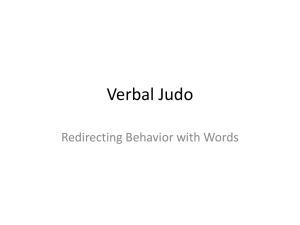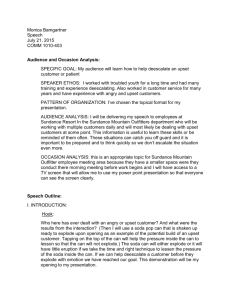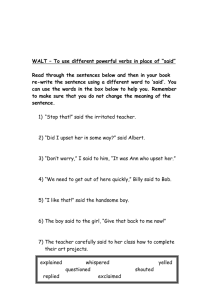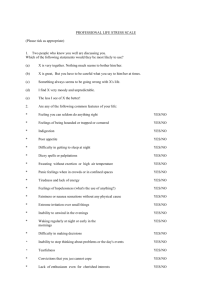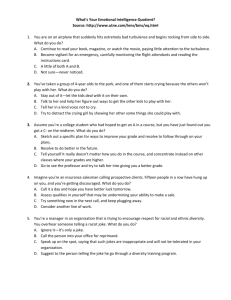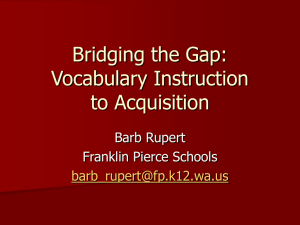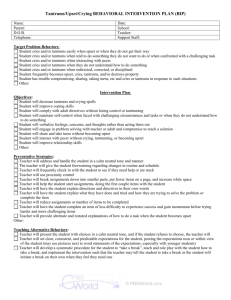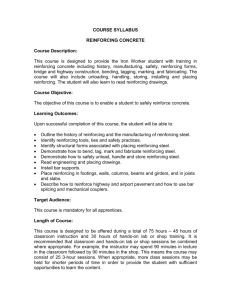Teacher Language rubric
advertisement
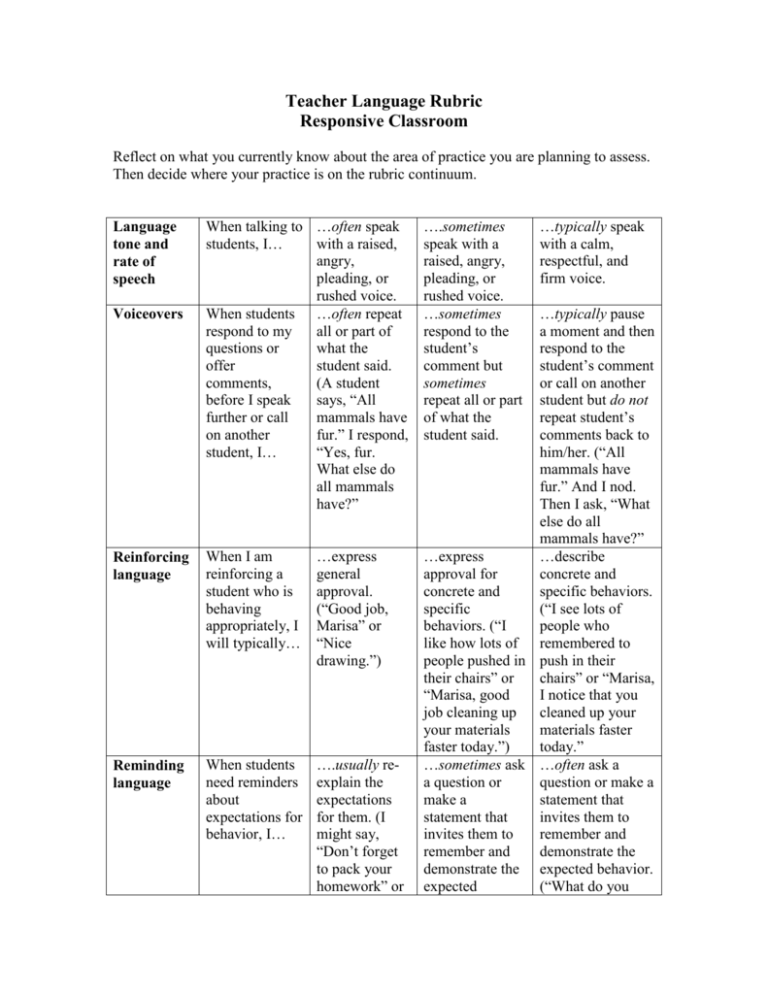
Teacher Language Rubric Responsive Classroom Reflect on what you currently know about the area of practice you are planning to assess. Then decide where your practice is on the rubric continuum. Language tone and rate of speech Voiceovers When talking to …often speak students, I… with a raised, angry, pleading, or rushed voice. When students …often repeat respond to my all or part of questions or what the offer student said. comments, (A student before I speak says, “All further or call mammals have on another fur.” I respond, student, I… “Yes, fur. What else do all mammals have?” Reinforcing language When I am reinforcing a student who is behaving appropriately, I will typically… …express general approval. (“Good job, Marisa” or “Nice drawing.”) Reminding language When students need reminders about expectations for behavior, I… ….usually reexplain the expectations for them. (I might say, “Don’t forget to pack your homework” or ….sometimes speak with a raised, angry, pleading, or rushed voice. …sometimes respond to the student’s comment but sometimes repeat all or part of what the student said. …typically speak with a calm, respectful, and firm voice. …typically pause a moment and then respond to the student’s comment or call on another student but do not repeat student’s comments back to him/her. (“All mammals have fur.” And I nod. Then I ask, “What else do all mammals have?” …express …describe approval for concrete and concrete and specific behaviors. specific (“I see lots of behaviors. (“I people who like how lots of remembered to people pushed in push in their their chairs” or chairs” or “Marisa, “Marisa, good I notice that you job cleaning up cleaned up your your materials materials faster faster today.”) today.” …sometimes ask …often ask a a question or question or make a make a statement that statement that invites them to invites them to remember and remember and demonstrate the demonstrate the expected behavior. expected (“What do you Reminding language Redirecting language Usually, I use reminding or redirecting language when I am… When redirecting students, I… Reminding When redirecting students, I am… Language frequency I spend… “You should stop running.”) behavior. …angry or upset and students are out of control or upset. …often phrase the command as a question. (“Mario, do you want me to take those toys away?” or “Sonya, would you sit down, please?”) …often angry or upset. …still calm but sometimes students are out of control or upset. …sometimes give brief directions in the form of a statement but sometimes phrase the command as a question. …more time on general praise, reminders, and redirections than on reinforcing language. …often calm but sometimes don’t intervene until the students are out of control or upset. …about the same amount of time on reinforcing language as on general praise, reminders, and redirections. need to be doing right now?” or “Show me how you will follow our rules.” …still calm and students are not yet out of control or upset. …typically give brief and nonnegotiable directions in the form of a statement. (“Mario, hands in your lap” or “Sonya, walk.”) …usually calm and intervene before students are out of control or upset. …more time on reinforcing language than on general praise, reminders, and redirections. Total number of points = ________ divided by _____ items = _______ Strength area = 4.0 or more (practice is strong but needs refinements at a very sophisticated and complex level) Good progress = 3.0 - 3.9 (teacher is making good progress but still has some areas for growth) Area to be improved = less than 3.0 (teacher recognizes their implementation needs work)

